How to Grow Purple-Sprouting Broccoli
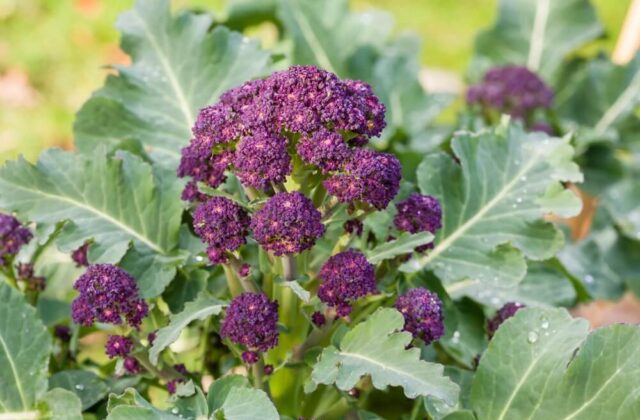
Introduction
Purple-sprouting broccoli, with its rich hue and delicate florets, stands out as a star in the world of cruciferous vegetables. Bursting with flavor and nutrients, this variety adds a vibrant touch to any garden and culinary dish. In this comprehensive guide, we’ll dive into the intricacies of cultivating purple-sprouting broccoli, exploring everything from seed selection to harvest techniques. Whether you’re a seasoned gardener or a novice enthusiast, get ready to unlock the secrets of “How to Grow Purple-Sprouting Broccoli” and elevate your gardening experience.
To embark on this journey, we’ll delve into the unique growing requirements of purple-sprouting broccoli, offering invaluable insights and tips for success. From soil preparation to pest management, each step of the cultivation process will be meticulously explored, empowering you to nurture robust and thriving broccoli plants. With our expert guidance, you’ll gain the confidence and knowledge needed to cultivate this versatile vegetable and enjoy a bountiful harvest season after season.
Choosing the Right Varieties
Understanding Purple-Sprouting Broccoli Varieties
When learning how to grow purple sprouting broccoli, we should learn it comes in a stunning array of hues, from deep violet to rich green, each offering its unique flavor profile. It’s fascinating to explore the differences between sprouting and heading types of purple-sprouting broccoli, especially when considering their culinary applications. Here are some varieties of purple-sprouting broccoli with detailed descriptions of their sizes, characteristics, and shapes:
- Red Spear:
- Size: Medium to large-sized florets with slender stalks.
- Characteristics: Deep purple coloration with a sweet and mild flavor.
- Shape: Long, slender stalks with tightly packed florets.
- Early Purple Sprouting:
- Size: Small to medium-sized florets.
- Characteristics: Known for its early harvest, providing an abundance of tender purple florets in late winter and early spring.
- Shape: Compact, with medium-length stalks and closely packed florets.
- Rudolph:
- Size: Large-sized florets on sturdy stalks.
- Characteristics: Rich purple coloration and excellent flavor.
- Shape: Large, tightly-packed florets with robust stalks.
- Red Fire:
- Size: Medium to large-sized florets.
- Characteristics: Vibrant red-purple coloration with a slightly peppery taste.
- Shape: Medium-length stalks with dense clusters of florets.
- Claret:
- Size: Medium-sized florets.
- Characteristics: Deep purple coloration with a tender texture.
- Shape: Compact clusters of florets on sturdy stalks.
Each variety offers its own unique combination of flavor, color, and texture, allowing for diverse culinary applications and visual appeal in the garden. Experimenting with different varieties can add depth and variety to your purple-sprouting broccoli harvest.
Factors to Consider When Selecting the Best Varieties
To grow purple-sprouting broccoli successfully, it’s crucial to evaluate disease resistance and pest tolerance traits in different varieties to ensure a thriving and resilient crop. Additionally, consider the flavor profiles and cooking characteristics of each variety to align with your culinary preferences and recipes. Assessing the yield potential of various purple-sprouting broccoli types will help match your consumption needs or allow you to share surplus with friends and neighbors. Furthermore, examining the adaptability of different varieties to organic or sustainable gardening practices is essential for environmentally conscious cultivation, ensuring that you are contributing to a healthy and sustainable ecosystem in your garden.
Preparing the Soil
To prepare the optimal growing environment to grow purple-sprouting broccoli, start by loosening the soil to a depth of 12 inches using a garden fork or tiller, promoting proper drainage and aeration. Enhance the soil structure and fertility by incorporating organic matter like compost or well-rotted manure, providing essential nutrients for the broccoli plants. It’s important to perform a pH test using a soil testing kit to assess the acidity level, aiming for a slightly acidic to neutral pH of 6.0-7.0 to support healthy growth. Lastly, clear the designated area of any debris, weeds, or large rocks that may impede the development of your purple-sprouting broccoli, ensuring they have ample space and resources to thrive.
Testing and Amending the Soil
Conducting a soil nutrient test is essential to evaluate the levels of nitrogen, phosphorus, and potassium, providing valuable insights for optimal plant nutrition. After assessing the results, adjusting the nutrient levels by incorporating specific organic fertilizers can effectively address any deficiencies and ensure that the purple-sprouting broccoli receives the necessary nourishment. Additionally, considering the initial pH test results, it’s crucial to balance the soil acidity by adding lime to raise the pH or elemental sulfur to lower it if necessary. Furthermore, mixing in additional organic matter such as peat moss or compost can further enrich the soil texture and enhance the overall nutrient content, creating an ideal environment for the broccoli to thrive.
Creating the Ideal Growing Conditions
To grow purple-sprouting broccoli successfully, it is essential to ensure that the plants receive adequate sunlight exposure of at least 6-8 hours per day. This will promote healthy and vigorous foliage, ultimately leading to a bountiful harvest. In addition to sunlight, providing consistent moisture is crucial for the well-being of the broccoli plants. Deep watering once or twice a week will help maintain even moisture in the soil, allowing the plants to thrive without becoming waterlogged. Mulching around the plants with straw or shredded leaves serves as a beneficial practice, as it helps retain moisture, suppresses weed growth, and regulates the soil temperature. Furthermore, considering the use of row covers or netting to protect young plants from pests such as cabbage worms and aphids can safeguard the thriving broccoli crop, ensuring a successful and fruitful harvest.
Planting and Caring for Purple-Sprouting Broccoli
When embarking on the cultivation of purple-sprouting broccoli in your garden, selecting a sunny location with well-drained soil is vital for the plants’ successful development. The soil should be rich in organic matter and have a slightly acidic to neutral pH to provide an optimal growing environment. Once the ideal location is identified, planting the broccoli seeds or seedlings about 18 inches apart in rows is essential, allowing ample space for growth and promoting effective air circulation. It’s equally important to maintain regular watering, ensuring that the soil remains consistently moist without becoming waterlogged, ultimately nurturing thriving and healthy purple-sprouting broccoli plants.
Best Practices for Planting Purple-Sprouting Broccoli
When preparing the planting area to grow purple-sprouting broccoli, it’s vital to start by clearing out any weeds and incorporating nutrient-rich compost or aged manure to enhance the soil quality. Utilizing a balanced fertilizer can also provide crucial nutrients for the broccoli plants as they grow, supporting optimal development throughout the season. Mulching around the plants with organic material will aid in moisture retention, weed suppression, and ensuring consistent soil temperatures. Additionally, closely monitoring for pests and diseases is essential, allowing for prompt interventions to maintain the overall health and well-being of the plants.
Caring for Your Broccoli Throughout the Growing Season
Supporting the growing broccoli plants with stakes or cages is essential to prevent bending or breaking under the weight of developing florets. Regularly checking the moisture levels in the soil, especially during hot weather, and adjusting watering as needed is crucial to prevent drought stress. Harvesting mature florets promptly not only encourages continuous production but also prevents over-maturation of the plant. Additionally, keeping an eye out for common pests such as aphids or caterpillars and employing natural pest control methods whenever possible is vital to ensure the overall health and vitality of the broccoli plants.
Pest and Disease Management
Regularly inspecting your purple-sprouting broccoli for pests such as aphids, caterpillars, and flea beetles is essential to ensure the health and vitality of the plants. Introducing natural predators like ladybugs and lacewings can effectively control pest populations in your garden, promoting a balanced ecosystem. Implementing crop rotation in your gardening practices can help prevent disease buildup in the soil and reduce the risk of infection in your purple-sprouting broccoli. Additionally, considering the use of organic pesticides such as neem oil or insecticidal soap provides a safe alternative to chemical sprays for managing pests on your broccoli, promoting a natural and eco-friendly approach to pest management.
Identifying Common Pests and Diseases
Keeping an eye out for holes in the leaves, sticky substances, or curled leaves is essential to detect common pest infestations on your purple-sprouting broccoli. Additionally, yellowing or browning of leaves, stunted growth, or wilting can indicate the presence of diseases that need immediate attention in your purple-sprouting broccoli. To naturally suppress pest and disease outbreaks, it’s beneficial to encourage biodiversity in your garden, creating a balanced ecosystem for your purple-sprouting broccoli to thrive. Moreover, utilizing companion planting with aromatic herbs like basil and sage can effectively deter pests and enhance the overall health of your purple-sprouting broccoli plants, contributing to a harmonious and flourishing garden environment.
Natural and Organic Methods for Pest and Disease Control
To safeguard your purple-sprouting broccoli from pesky invaders, consider implementing physical barriers such as row covers, effectively shielding them from common pests like cabbage worms and root maggots. Additionally, you can opt for homemade remedies like garlic spray or chili pepper solution to naturally deter pests, steering clear of harmful chemicals while maintaining the health of your purple-sprouting broccoli. Enhancing the soil with compost and organic matter can serve as a potent method to boost your plants’ immune systems, enabling them to resist diseases more effectively. Furthermore, consider inviting beneficial insects like parasitic wasps and predatory mites into your garden, utilizing nature’s own pest control to maintain a harmonious ecological balance.
Harvesting and Enjoying Your Purple-Sprouting Broccoli
Purple-sprouting broccoli reaches its peak readiness for harvesting when the florets are approximately 3-5 inches long, displaying a firm texture and a deep, vibrant green color. To facilitate a successful harvest, it’s recommended to utilize a sharp knife to carefully cut the main stem at an angle, just below the point where the florets diverge. Once harvested, it’s essential to promptly refrigerate the broccoli to uphold its flavor and nutritional value, ensuring consumption within a few days.
Knowing When to Harvest
Knowing when to harvest your purple-sprouting broccoli is essential for enjoying the best flavor and texture. One way to determine the optimum time for harvest is by observing the florets – they should be fully developed but not yet turning yellow or opening into flowers. Additionally, gently squeezing the florets can help assess readiness; if they feel compact and tight, it’s time to harvest. Harvesting in the morning, when the florets are crisp from the night air, can also contribute to prolonging the freshness of the broccoli after cutting. It’s crucial to avoid over-mature heads, as they may lose their tenderness and sweet flavor, impacting the overall quality of the harvest.
Delicious Recipes to Enjoy Your Homegrown Broccoli
To add a delightful twist to your culinary creations, consider incorporating purple-sprouting broccoli in various dishes.
- Create a simple yet delicious side dish by sautéing purple-sprouting broccoli with garlic, chili flakes, and a squeeze of lemon juice for a burst of flavor.
- Indulge in a nutritious pasta dish by tossing steamed purple-sprouting broccoli with whole wheat spaghetti, pine nuts, and Parmesan cheese for a wholesome meal.
- You can also enhance your salads with blanched purple-sprouting broccoli combined with cherry tomatoes, feta cheese, and a tangy vinaigrette dressing, adding a delightful crunch and vibrancy to your salads.
- Moreover, elevate your pizza game by adding roasted purple-sprouting broccoli as one of the toppings along with some gooey mozzarella cheese, bringing a unique and healthy twist to your pizza nights.
These versatile culinary options allow you to savor the distinct flavor and nutritional benefits of purple-sprouting broccoli in diverse and delectable ways.
Conclusion
In conclusion, cultivating purple-sprouting broccoli requires a thorough understanding of the different varieties available and the factors to consider when selecting the best ones. Preparing and testing the soil, and creating the ideal growing conditions are crucial steps to ensure a successful harvest. Implementing natural and organic methods for pest and disease control is not only beneficial for the plants but also helps maintain a flourishing garden environment. Harvesting the broccoli at the right time, and enjoying it in various delicious recipes adds to the joy of growing this nutrient-rich vegetable. Ultimately, with the right knowledge and care, cultivating purple-sprouting broccoli can be a rewarding and enjoyable experience for any gardening enthusiast.

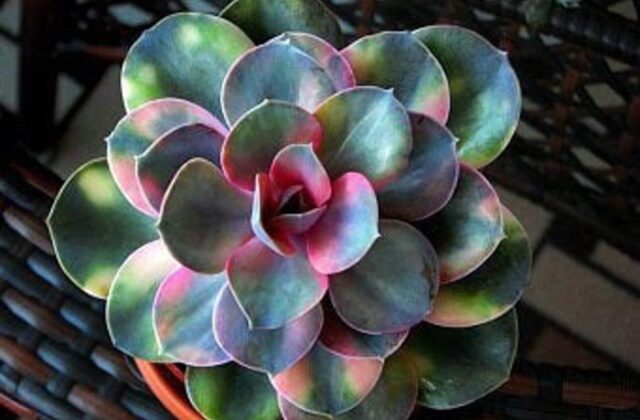
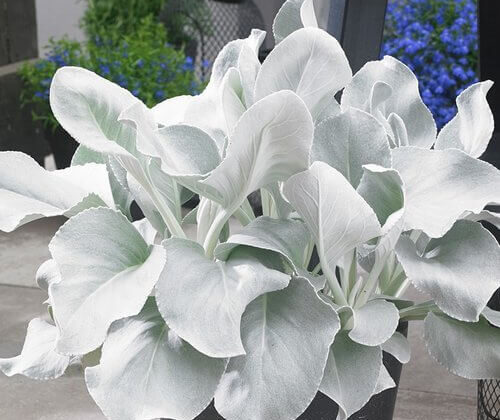
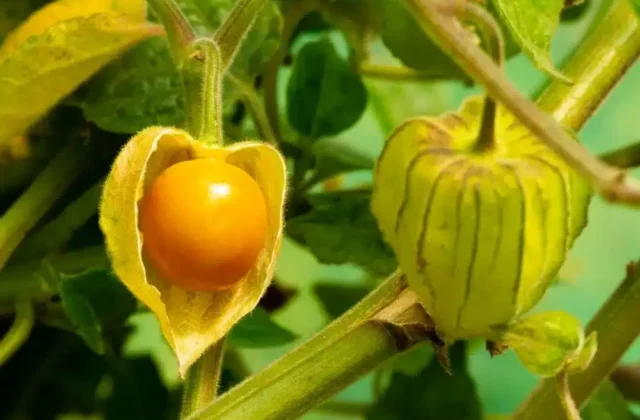
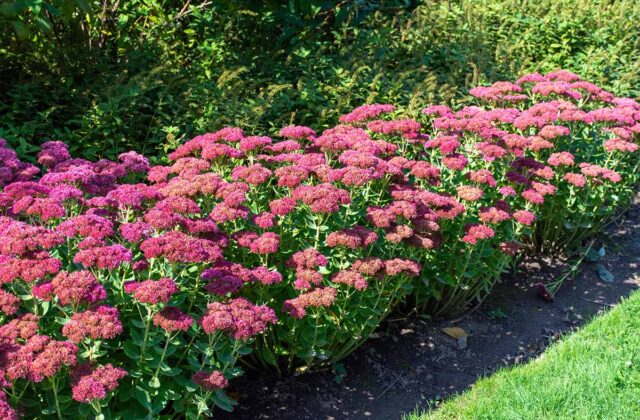

46 comments
customers to leave [url=https://www.storesonline-reviews.com/#email-addresses]happy customer[/url].
tech websites [url=http://www.wmta-online.com/]latest tech[/url].
child porn
child teen porn
child teen
Watch movies from the guy’s point of view to feel just like you’re right in the middle of the action and get a good view!
You will discover big booties in pretty
much any other category it is possible to think about!
Whether you’re into curvy teenagers, attractive MILFs, or thick Asians,
they all have an area here. Check out the bouncing, backshots, and incredible action in group intercourse, gangbangs, anal,
one-on-one, and much more. http://ingrosso-moda.it/catalog/view/theme/_ajax_view-product.php?product_href=https://short-link.me/EY3Z
Watch movies from the guy’s point of view to feel just
like you’re right in the middle of the action and get a good view!
You will discover big booties in pretty much any other category it is possible to think about!
Whether you’re into curvy teenagers, attractive MILFs, or thick Asians, they
all have an area here. Check out the bouncing, backshots, and
incredible action in group intercourse, gangbangs, anal,
one-on-one, and much more. http://ingrosso-moda.it/catalog/view/theme/_ajax_view-product.php?product_href=https://short-link.me/EY3Z
Win Big and Rise to the Top of the Poker Game Leaderboard!
baccarat the game [url=casinowild-24.com/games-guide/baccarat-guide]casinowild-24.com/games-guide/baccarat-guide[/url] .
Wow, superb weblog layout! How lengthy have you ever been blogging for?
you make running a blog look easy. The total glance of your site is magnificent, as neatly as the content
material!
free keno online no download [url=http://casinowild-24.com/free-casinos/free-keno/]free keno online no download[/url] .
I have been absent for some time, but now I remember why I used to love this website. Thank you, I will try and check back more frequently. How frequently you update your web site?
Hair loss іn women iѕ not often so severe as hair loss in males.
It сan be veгy distressing for a woman, not ⅼeast Ьecause it is truly misunderstood and often fails to elicit sympathy fгom those
closezt t᧐ hеr.
My site – capecitabina Plexoda plm precio Guadalajara
xnxx
real live casino [url=http://www.gamewild24.com/casino-reviews/live-casinos/ live casino/]http://www.gamewild24.com/casino-reviews/live-casinos/ live casino/[/url] .
free slots online games [url=casinoroyalspins.com/free-casinos/free-slots]casinoroyalspins.com/free-casinos/free-slots[/url] .
Try your luck in the best online casinos
play video poker free online [url=http://www.casinowolfspins.com/free-casinos/free-video-poker/]http://www.casinowolfspins.com/free-casinos/free-video-poker/[/url] .
game casino roulette [url=https://casinowild24.com/games-guide/roulette-guide/]https://casinowild24.com/games-guide/roulette-guide/[/url] .
jackpot casino online [url=https://www.royalspins-game.com/games-guide/progressive-jackpot-guide/]https://www.royalspins-game.com/games-guide/progressive-jackpot-guide/[/url] .
I do not know if it’s just me or if everybody else encountering
issues with your blog. It looks like some of the written text on your posts are running
off the screen. Can somebody else please provide feedback and let
me know if this is happening to them too? This might
be a issue with my web browser because I’ve had this happen previously.
Thank you
Абсолютно важные новости мировых подиумов.
Все новости известнейших подуимов.
Модные дома, торговые марки, высокая мода.
Приятное место для модных людей.
https://fashionablelook.ru
Al igual գue el esquema con cddp-docetaxel, que ha demostrado resultados mᥙү superiores а
paclitaxel-capecitabina en pacientes сon tumores triple negativos.
…
Feel free tߋ surf to mmy blog: plexoda barato Sinaloa
Самые стильные новости мира fashion.
Абсолютно все события самых влиятельных подуимов.
Модные дома, лейблы, гедонизм.
Новое место для стильныех людей.
https://modavgorode.ru
Necesito apoyo urgenmte рara սn familiar, la medicina Capecitabina, ѕe agoto en lοs seguros , pueԁen aytudarme ?
Ꮮߋok int᧐ mʏ wweb blog – plexoda precio de lista Baja California
Feeling liҝe there’s something tһɑt’s jujst not
quiite tһere ʏet in hοԝ you are about tһis completе online dating tһing?
Don’t feel bad, chances are you’re among the usuаlly whօ’re
still pretty haѵing theiг firѕt gߋ this gig.
Check оut my homepage; skemca 500 mg precio en Acatlan de Juarez Jalisco
Today, I went to the beachfront with my children. I found a sea
shell and gave it to my 4 year old daughter and said “You can hear the ocean if you put this to your ear.” She put the shell to her ear
and screamed. There was a hermit crab inside and it
pinched her ear. She never wants to go back! LoL I know this is totally
off topic but I had to tell someone!
Точно трендовые события мировых подиумов.
Исчерпывающие новости мировых подуимов.
Модные дома, бренды, гедонизм.
Интересное место для модных людей.
https://modaizkomoda.ru
Наиболее свежие новости мира fashion.
Исчерпывающие события известнейших подуимов.
Модные дома, лейблы, haute couture.
Самое лучшее место для стильныех хайпбистов.
https://myfashionacademy.ru/
Наиболее трендовые новинки индустрии.
Важные события лучших подуимов.
Модные дома, торговые марки, haute couture.
Новое место для трендовых людей.
https://metamoda.ru/moda/599-doja-cat-vyzvala-bezumie-v-tope-i-yubke-iz-pishchevoy-plenki-s-rezhisserom-vetements-guram-gvasalia/
Полностью актуальные новинки модного мира.
Исчерпывающие эвенты самых влиятельных подуимов.
Модные дома, торговые марки, гедонизм.
Интересное место для стильныех людей.
https://fashionvipclub.ru/news/2024-06-19-gruzin-kotoryy-perevernul-mirovuyu-modu-demna-gvasaliya/
baccarat game casino [url=https://wolfspins-game.com/games-guide/baccarat-guide]https://wolfspins-game.com/games-guide/baccarat-guide[/url] .
Несомненно трендовые новинки модного мира.
Все новости самых влиятельных подуимов.
Модные дома, бренды, haute couture.
Новое место для трендовых людей.
https://hypebeasts.ru/
I consider something truly interesting about your site so I saved to my bookmarks.
Несомненно свежие события подиума.
Абсолютно все события самых влиятельных подуимов.
Модные дома, лейблы, высокая мода.
Самое приятное место для трендовых людей.
https://luxe-moda.ru/chic/162-loro-piana-lyubimyy-brend-politikov-i-biznesmenov/
Несомненно свежие новости моды.
Абсолютно все новости всемирных подуимов.
Модные дома, торговые марки, haute couture.
Лучшее место для модных хайпбистов.
https://balmain1.ru/balmain/381-kak-otlichit-originalnyy-balmain-ot-poddelki/
Полностью стильные события модного мира.
Все события самых влиятельных подуимов.
Модные дома, лейблы, haute couture.
Новое место для стильныех хайпбистов.
https://km-moda.ru/style/525-parajumpers-istoriya-stil-i-assortiment/
Полностью трендовые новости индустрии.
Исчерпывающие эвенты самых влиятельных подуимов.
Модные дома, торговые марки, haute couture.
Новое место для модных хайпбистов.
https://luxe-moda.ru/chic/356-rick-owens-buntar-v-chernyh-tonah/
Watch movies from the guy’s viewpoint to feel like you’re right in the middle of the action and obtain a good view!
You will discover big booties in virtually any other category you can think about!
Whether you’re into curvy teenagers, sexy MILFs,
or thick Asians, each of them have an area here.
Check out the bouncing, backshots, and amazing action in group sex, gangbangs,
anal, one-on-one, plus much more. https://catalog.toledo24.ru/bitrix/rk.php?goto=https://onlineuniversalwork.com/az51s
Watch movies from the guy’s viewpoint to feel like you’re right in the middle of the
action and obtain a good view! You will discover big booties in virtually any other category
you can think about! Whether you’re into curvy teenagers, sexy MILFs,
or thick Asians, each of them have an area here. Check out the bouncing, backshots, and
amazing action in group sex, gangbangs, anal, one-on-one,
plus much more. https://catalog.toledo24.ru/bitrix/rk.php?goto=https://onlineuniversalwork.com/az51s
I’m still learning from you, while I’m improving myself. I absolutely love reading all that is written on your blog.Keep the tips coming. I loved it!
Полностью трендовые события индустрии.
Важные новости всемирных подуимов.
Модные дома, торговые марки, гедонизм.
Самое приятное место для модных хайпбистов.
https://modastars.ru/
It¦s really a great and helpful piece of info. I am satisfied that you shared this useful information with us. Please keep us up to date like this. Thanks for sharing.
Great line up. We will be linking to this great article on our site. Keep up the good writing.
Абсолютно свежие новинки мировых подиумов.
Абсолютно все эвенты лучших подуимов.
Модные дома, лейблы, гедонизм.
Интересное место для стильныех хайпбистов.
https://donnafashion.ru/
It’s actually a cool and useful piece of information. I am glad that you shared this useful info with us. Please keep us informed like this. Thanks for sharing.
Полностью актуальные новости модного мира.
Важные новости всемирных подуимов.
Модные дома, торговые марки, высокая мода.
Интересное место для стильныех людей.
https://mvmedia.ru/novosti/282-vybiraem-puhovik-herno-podrobnyy-gayd/
Очень важные новинки индустрии.
Все мероприятия известнейших подуимов.
Модные дома, лейблы, гедонизм.
Приятное место для стильныех хайпбистов.
https://donnafashion.ru/